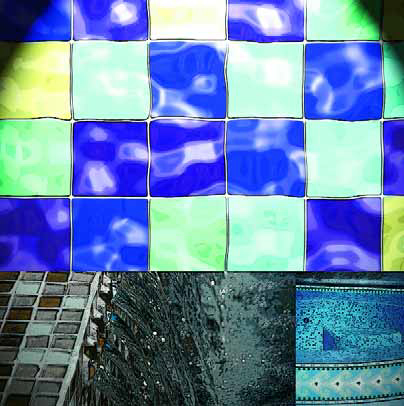ARTICLES
Advance Search
Aquatic Health
Aquatic Health, Fitness & Safety
Around the Internet
Aquatic Culture
Aquatic Technology
Artful Endeavors
Celebrity Corner
Life Aquatic
Must-See Watershapes
People with Cameras
Watershapes in the Headlines
Art/Architectural History
Book & Media Reviews
Commentaries, Interviews & Profiles
Concrete Science
Environment
Fountains
Geotechnical
Join the Dialogue
Landscape, Plants, Hardscape & Decks
Lighter Side
Ripples
Test Your Knowledge
The Aquatic Quiz
Other Waterfeatures (from birdbaths to lakes)
Outdoor Living, Fire Features, Amenities & Lighting
Plants
Ponds, Streams & Waterfalls
Pools & Spas
Professional Watershaping
Structures (Editor's Notes)
Travelogues & History
Water Chemistry
WaterShapes TV
WaterShapes World Blog
Web Links
Around the Internet
Aquatic Culture
Aquatic Technology
Artful Endeavors
Celebrity Corner
Life Aquatic
Must-See Watershapes
People with Cameras
Watershapes in the Headlines
The latest generation of Las Vegas hotels and casinos offers an amazing showcase for pools, fountains and watershapes of every shape and size. In fact, for many such properties, the presence of these increasingly imaginative watershapes is crucial to defining their appeal for huge numbers of guests and visitors. As these properties and their watershapes have become more elaborate and unconventional, they've presented designers, engineers and builders with greater and greater technical challenges - many of them carried in the plain fact that water can inflict a great deal of damage on these facilities if it is not properly contained and controlled. In our end of the watershaping trades, the visual and sensory arms race has challenged the waterproofing industry to step up to the plate and manage the integrity of every nook and cranny of every vessel, be it wide or narrow, curved or straight, below-grade or
For many clients, the decision to purchase a watershape represents the second or third largest expenditure they'll ever make. As a result, understanding the psychology that drives client decision-making is an issue that cuts very close to the heart of what we all do for a living. To gain a firmer grasp on what makes clients tick, I recently turned to Trading Up, an insightful book by Michael Silverstein and Neil Fiske (Penguin Group, 2005). The 300-page text explores the issue of why people choose to spend more money in some areas of their lives while allocating less to others - a fascinating approach that sheds a great deal of light on the dynamics of making large financial decisions. The premise of Silverstein's and Fiske's discussion is that most people have an idiosyncratic curve of preferences when it comes to making significant purchasing decisions. Why, for example, will some people will set aside substantial resources to buy a Mercedes or Jaguar while spending (relatively) much less on
I know I've quoted or paraphrased Ernest Hemingway on this point before, but it bears repeating once again: Anything that was ever any good, you pay for. I'd go so far to say I've based my entire business philosophy on that basic idea. For one thing, there's an essential truth to what he's saying. For another, I see its clear application to watershaping on a variety of levels - particularly when it comes to the materials we use in creating our "art." Indeed, a huge part of giving clients the unique elegance and beauty they so often crave involves understanding and appreciating
In the October 2005 issue of WaterShapes, I discussed a project that had tested my abilities and helped me to grow as a landscape designer. To that point in my career, I had functioned mainly as a designer focused on planting design. It was quite a step for me to accept the greater responsibility that came with a project that put me in charge of work on the total environment - pool, spa, deck, outdoor amenities and artwork placement as well as the planting plan. I knew going in that project management is a challenge no matter the size or scale of the job. Coordinating various trades, anticipating schedules and materials needs, making on-site design decisions and covering all
Robert Frost once wrote, "I took the road less traveled and that has made all the difference." As we approach the New Year, I can't think of a more fitting theme for the watershaping industry. If we consider where we were just ten years ago and compare that situation to the world in which we live and work today, it's clear that the industry as a whole has changed immeasurably - and, I think, for the good. I can say further and without fear of contradiction that those who have embraced the "road less traveled" and faced the future with creativity, hope and optimism have flourished, while those who have clung to the paradigms of the past are not so well positioned to
For all the beauty and creativity that characterize the finished watershapes we cover in our magazine, I often find just as much inspiration in the stories behind these polished works of art. Quite often, in fact, I perceive that these
All artists and designers have to come from somewhere, creatively speaking. In our case, we came to watershaping via the world of glass arts and crafts, a starting place that led us first to create unusual sculptures in glass and light - and then to carry our work out into landscapes and especially into settings that feature water. In collaborating mostly with architects and landscape architects and designers, we at SWON Design in Montreal have found what we believe to be an incredibly rich vein of aesthetic potential. Indeed, we have come through the years to recognize with greater and greater profundity that water
It's speculated that the exterior spaces at Playboy Mansion West must be the most photographed in the world. That's hard to quantify, of course, but it's certainly safe to say that since construction began in the 1970s, the home of publisher Hugh Hefner and its famous swimming pool and grotto have been used ceaselessly to promote his unique lifestyle. Indeed, the residence has attained near-mythic status as the world's most elaborate adult playground. For about 20 years, we had
Fifteen years ago, aquatic play attractions were found mainly in commercial waterparks in the form of large, multi-level, themed structures. Some smaller elements were found in the shallow ends of swimming pools, but they were generally limited to a few play apparatuses such as water umbrellas. Much has changed in recent years, and aquatic play systems are now featured in a greater variety of settings including city parks, recreation centers, resorts and a range of other recreational spaces. This trend did not burst forth overnight: For more than ten years, our firm and others have been helping things along by focusing attention on the value of concepts related to zero-depth aquatic play. We at Vortex Aquatic Structures in Montreal, for example, have designed our "Splashpads" to bring the joy and recreational value of aquatic play to almost any space. Among our objectives is bringing a measure of the commercial waterpark experience to places such as neighborhood parks, housing developments, campgrounds and other facilities, thereby allowing everyone within a community to experience
When we think about tree houses, most of us we probably think of the ramshackle platforms built by kids and suspended precariously up in backyard oaks or sycamores. (Those of us who are a bit older might also think about the amazing makeshift domicile in the movie "Swiss Family Robinson" or the wonderful "ride" of the same name at Disneyland.) Not long ago, however, my daughter guided me to a trio of publications that cover tree houses from an entirely different perspective. In reading them, I was enlightened to the fact that, first of all, tree houses






















